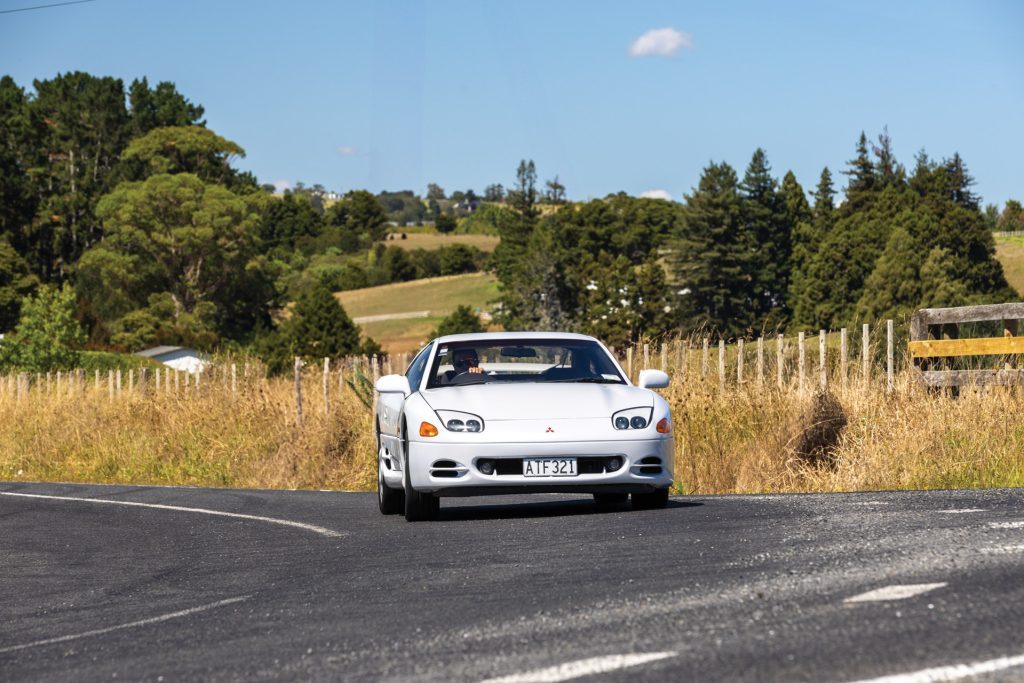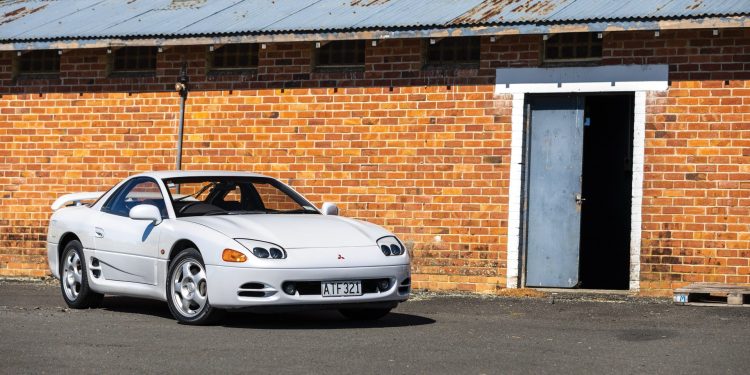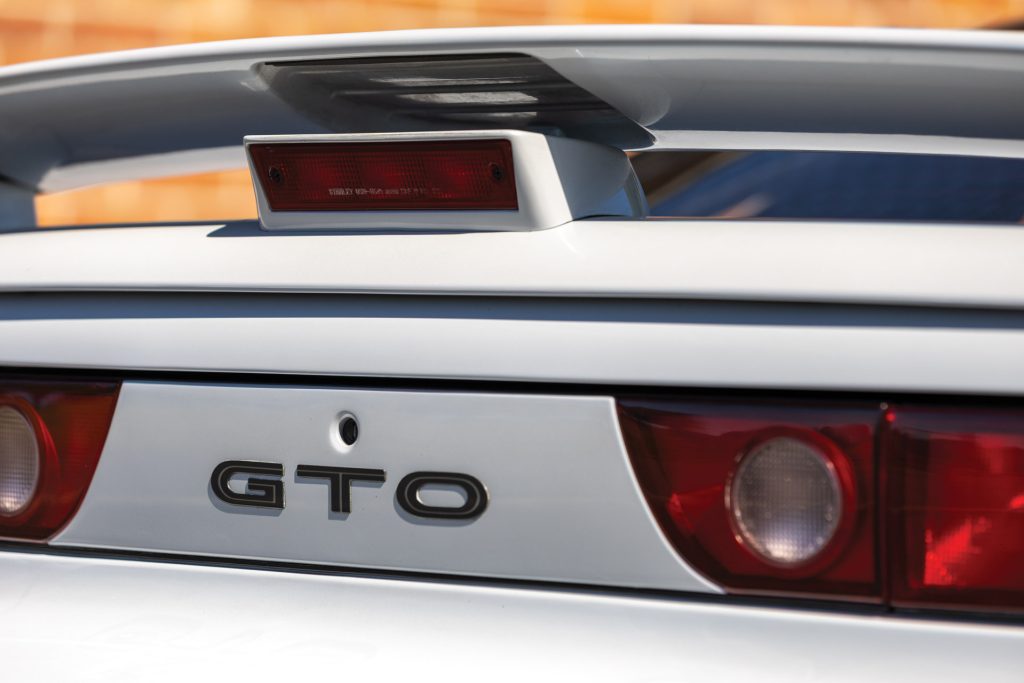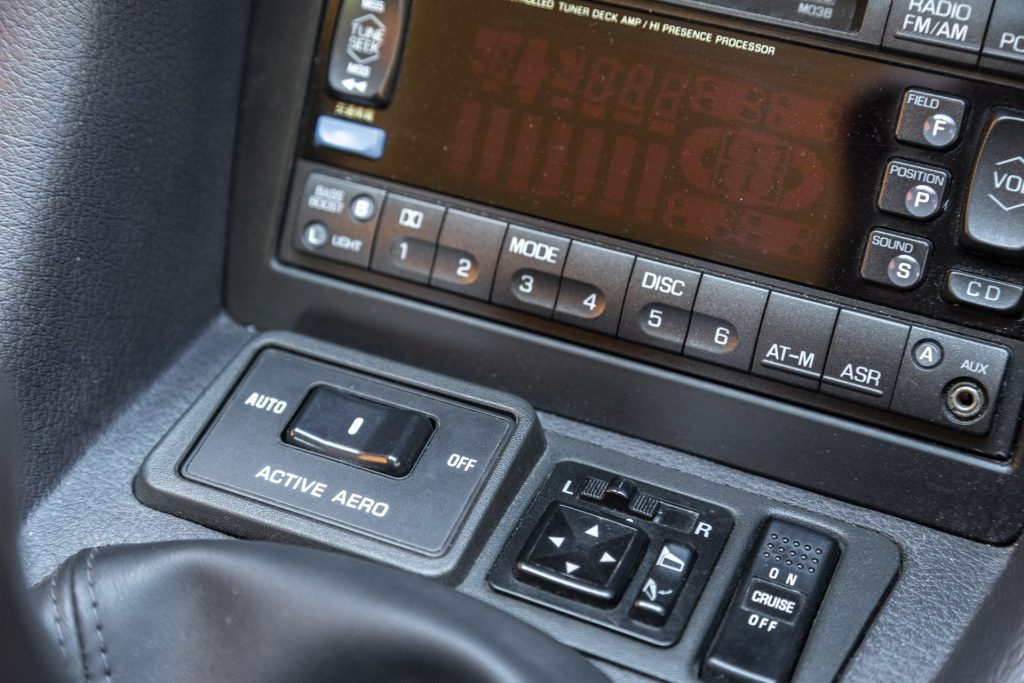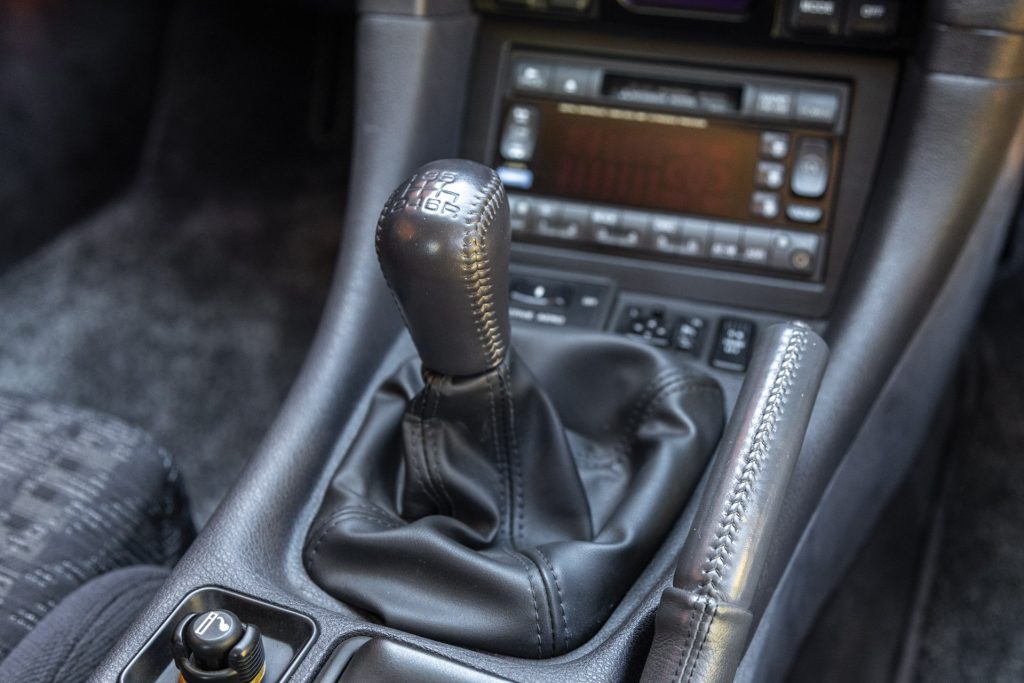1994 Mitsubishi GTO
Words: Kyle Cassidy | Photos: Alex Schultz
The Mitsubishi GTO is one of the forgotten Japanese heroes. It was a technological showpiece packing equal amounts of power and presence, and plenty of gizmos too.
During the late 80s and early 90s, we got a slew of great performance cars originating from the Land of the Rising Sun. With a booming economy and sake flowing freely at planning meetings, nothing was deemed too outrageous. The marketers and bean counters let the engineers go crazy, who were keen to show the automotive world that Japan could be innovators.
Honda, Nissan, Toyota and Mazda were all in on it, as was Mitsubishi. The R&D department at the diamond brand was not only busy developing cars to win rallies, but also concocting a technological showpiece, which we came to know as the GTO.

Launched in October 1990, Mitsubishi called its GTO a ‘new-age super four-wheel drive sports car’. Up front was a new 3.0-litre intercooled twin-turbo V6 engine, making the gentleman’s agreement max of 206kW with a handy 417Nm of torque flowing from 2500rpm. The entry-level model made do with a naturally aspirated version making 168kW and 275Nm, helped along by electronically-controlled variable inlet valve system. For convenience’s sake, this could be had with a four-stage auto, while the twin-turbo was paired exclusively with a Getrag five-speed manual. Helping ground the power, the GTO enjoyed a fulltime four-wheel drive system using a viscous coupling centre differential splitting the torque 45:55 front to rear. While the MacPherson struts up front weren’t overly sophisticated, the GTO did enjoy a double wishbone type arrangement at the rear. And the suspension was electronically controlled, adjusting the damping rates in its Tour and Sport modes. Helping it round up the bends, Mitsubishi gave it a four-wheel steering system, the rear wheels moving in the same direction as those up front at ‘mid- to high-speed’. A neat addition was the Active Aero System, automatically lowering the front ‘venturi cover’ and adjusting the rake of the rear spoiler at speeds above 80km/h. And don’t forget the Active Exhaust System, re-routing the spent gases either through or bypassing the rear silencer for a louder or quieter exhaust note.
The GTO was not a JDM special; Mitsi exported it to the US as the 3000GT VR-4, and it sold the car in Europe too. The car was also reskinned as the Dodge Stealth for US consumption (Mitsubishi and Chrysler had ties back then). In production for over a decade, the Series 2 model debuted in 1994, which saw the car’s pop-up headlights replaced by fixed projector beam units along with a new bumper. The twin-turbo gained a six-speed manual while from 1996 the V6 got a torque bump with the new MIVEC valve timing tech.
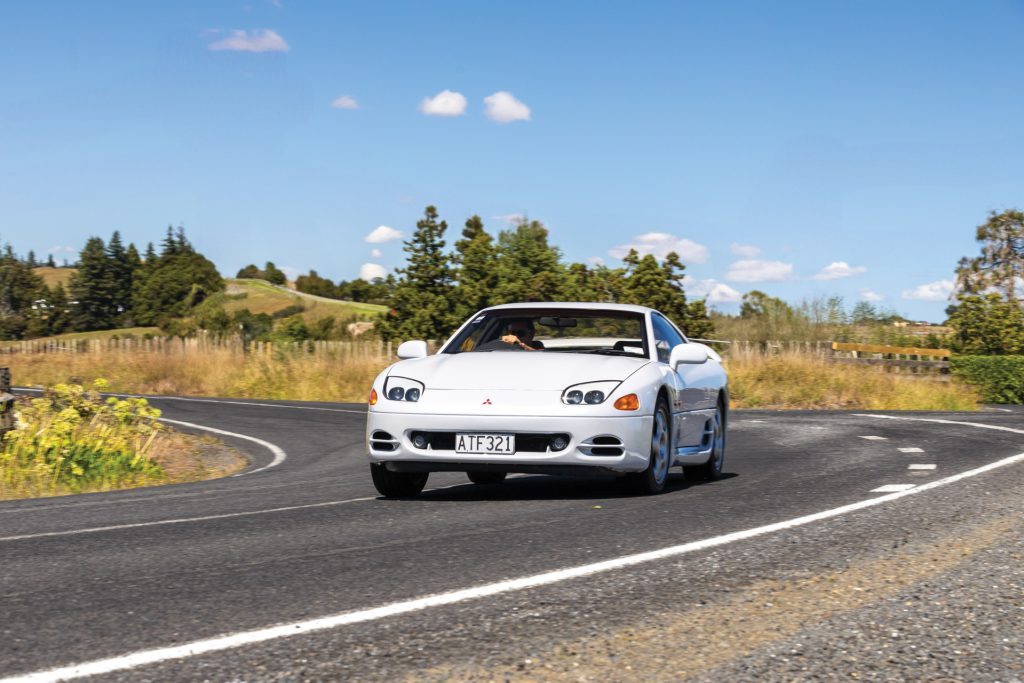
To remain competitive on pricing, Mitsubishi also began stripping away some of the tech highlights, phasing out the active exhaust and adaptive dampers in 1995 and the active aero a year later.
A couple of variations on the GTO included the MR, a JDM-specific model essentially stripped of the gizmos to add lightness. Deleted from the spec was the rear-wheel steering, ABS, electronic suspension and active spoilers. It had a revised final drive to help improve acceleration, while uprated AP brakes were an option. In the US, a limited run of Spyder models was created, Mitsubishi working with a third party engineering firm to create a convertible model with a folding hardtop.
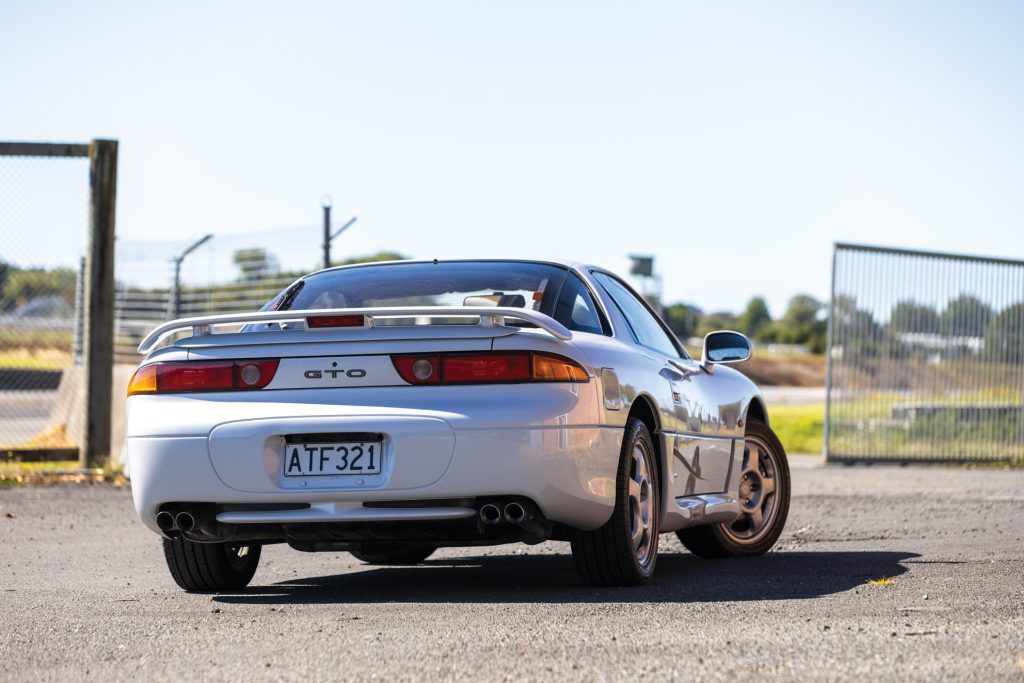
Our example here is a 1994 model that has lived an easy life with just a few owners and only 42,000km on the clock. It was snapped up by its new owner as something a bit different. And they are hard to come by in such good, original condition. As the owner says, the brand of car doesn’t matter so long as it is original, has low mileage and a bit of character. And while the GTO was a common sight a decade or so ago (mainly the NA auto type), they are rare now.
Open the bonnet, and the 2972cc 6G72, narrow-angle V6 lies transversely across the bay, sitting up high and in front of the axle. Like the rest of the car, it’s super clean under here. The under-bonnet heat shields are a little more robust than usual, suggesting the turbos generate some warmth.
Turbo tech was a little fragile in its infancy. The handbook stresses to change the oil at the recommended intervals to avoid turbo damage. Other tips to prolong turbo life, according to the manual, include avoiding sudden acceleration or unnecessary revving when the engine oil is cold, and letting it idle for at least one minute before shutting it off after it has been driven at speed.
The GTO has quite squat proportions; it’s wide, sitting on a short wheelbase. It’s not quite as cool without the pop-up lights but the 17s (shod with 235/45 rubber) look good, as do the numerous slots and vents about the bodywork.
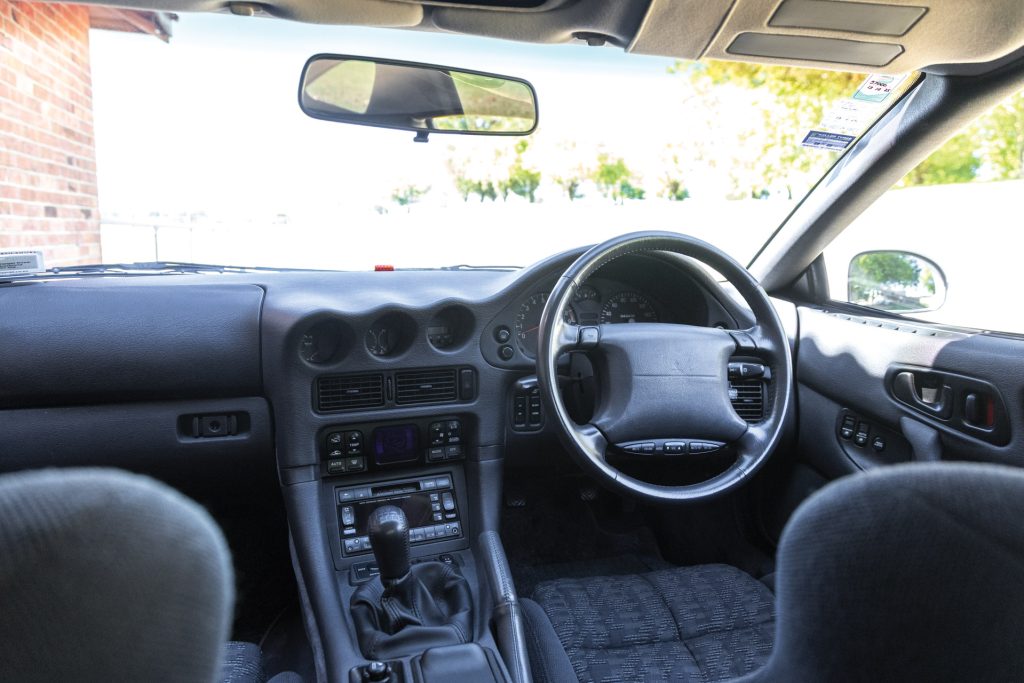
This has all the mod cons inside, the seat with a power slider, along with adjustable bolstering, also powered It’s quite wide too, designed with the American market in mind perhaps. There is a liberal sprinkling of buttons on the dash and console, with switches for the exhaust, aeros, cruise control. The double DIN audio cassette deck takes up a fair chunk of the centre stack while the gauge pod at the top keeps an eye on oil and water temperature, the time and the all-important boost pressure. Its steering wheel is large with stubby spokes as the airbag contraption dominates. Trimmed in grey fabric with matching grey plastics and that unmistakable JDM interior aroma, it’s all so nineties. Under the large glass liftback, the boot is shallow but wide, and you can fold the two rear seats. These offer next to no leg room being of the +2 variety.
While this example hasn’t travelled to the moon and back (that would see 765,000km on the odo), the shocks have been replaced, and are no longer of the adaptive kind. And it seems the exhaust mode button no longer does its trick either. But the aero gizmo still works, the rear spoiler changing its angle of attack visibly in the rear mirror and with an accompanying whirring.
There’s lots of turbo-fed midrange torque, at least once the V6 winds up past two and a half thousand that is, and then it’s on. The engine’s not a quick revver but spins toward 7000rpm without getting breathless. Kept above 3000rpm, the response is okay, and while it’s not the most sonorous six ever, it’s nice to be able to hear it over the road noise.
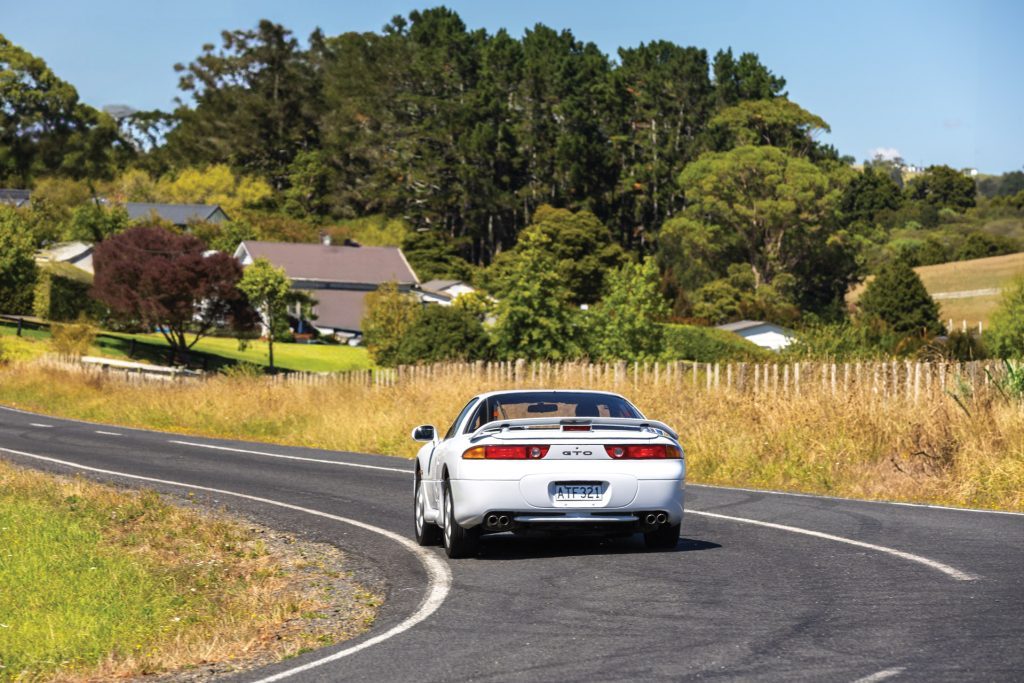
While the six-speeder doesn’t like to be rushed, it can be guided easily to the next gate where it slots a higher ratio without an excess of notchiness. The steering isn’t quite the precision instrument, but the GTO turns in nicely. It loads up in the corner and transmits all the road below, the good and the bad, though manages to keep the ugly rack rattle at bay. You can also feel the input from the rears as well through some corners, usually when you’ve given the steering a bit more lock. The GTO gets a bit of a lean on heading into the bends but then settles itself well enough to track through untroubled.
The ride is accommodating and when the boost hits the GTO sinks back on its rears and proves reasonably quick, despite its 1680kg weight. And that mass probably lends to its comfort quotient. There’s not too much in the way of rattle and shake through the cabin when it rumbles over the bumps. As the name suggests, it’s a comfortable and quick GT type of car, one that probably suited American tastes quite well, where it sold in reasonable numbers.
While it’s not in the same realm as the other Japanese manufacturers’ halo products of the era, it’s not nearly as expensive either.
This one traded hands in the low $30k bracket, making it quite the bargain in the scheme of things.
